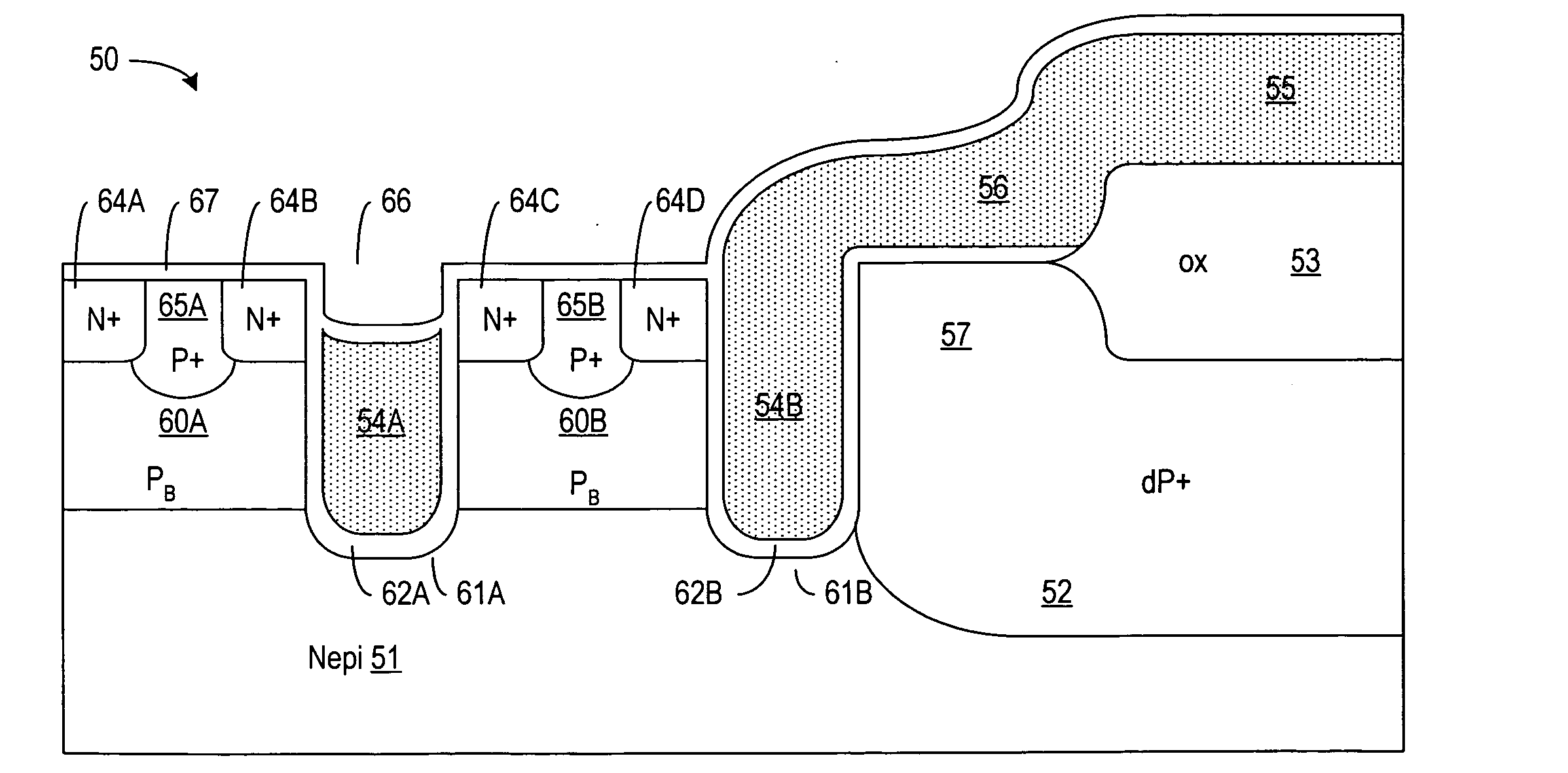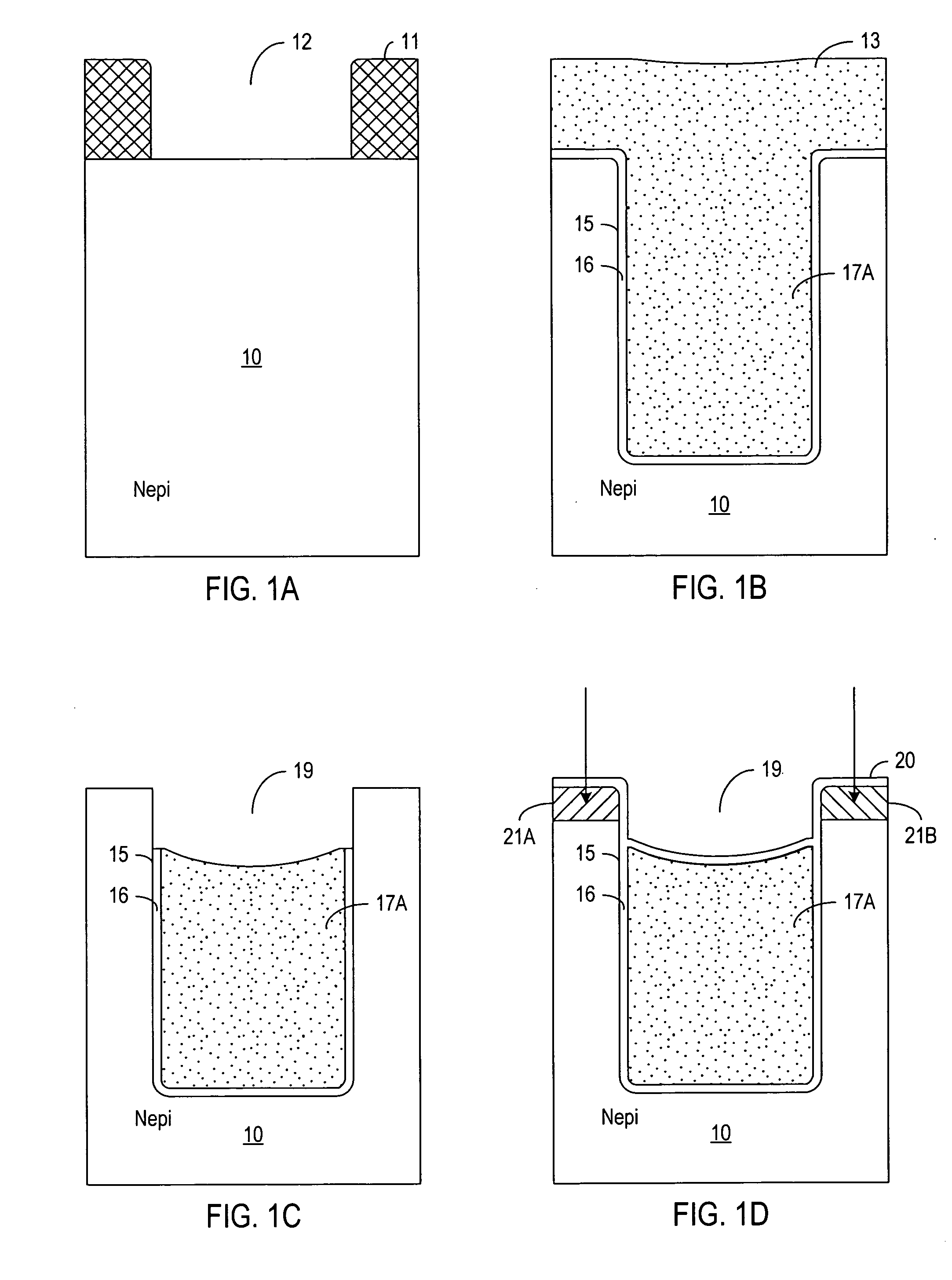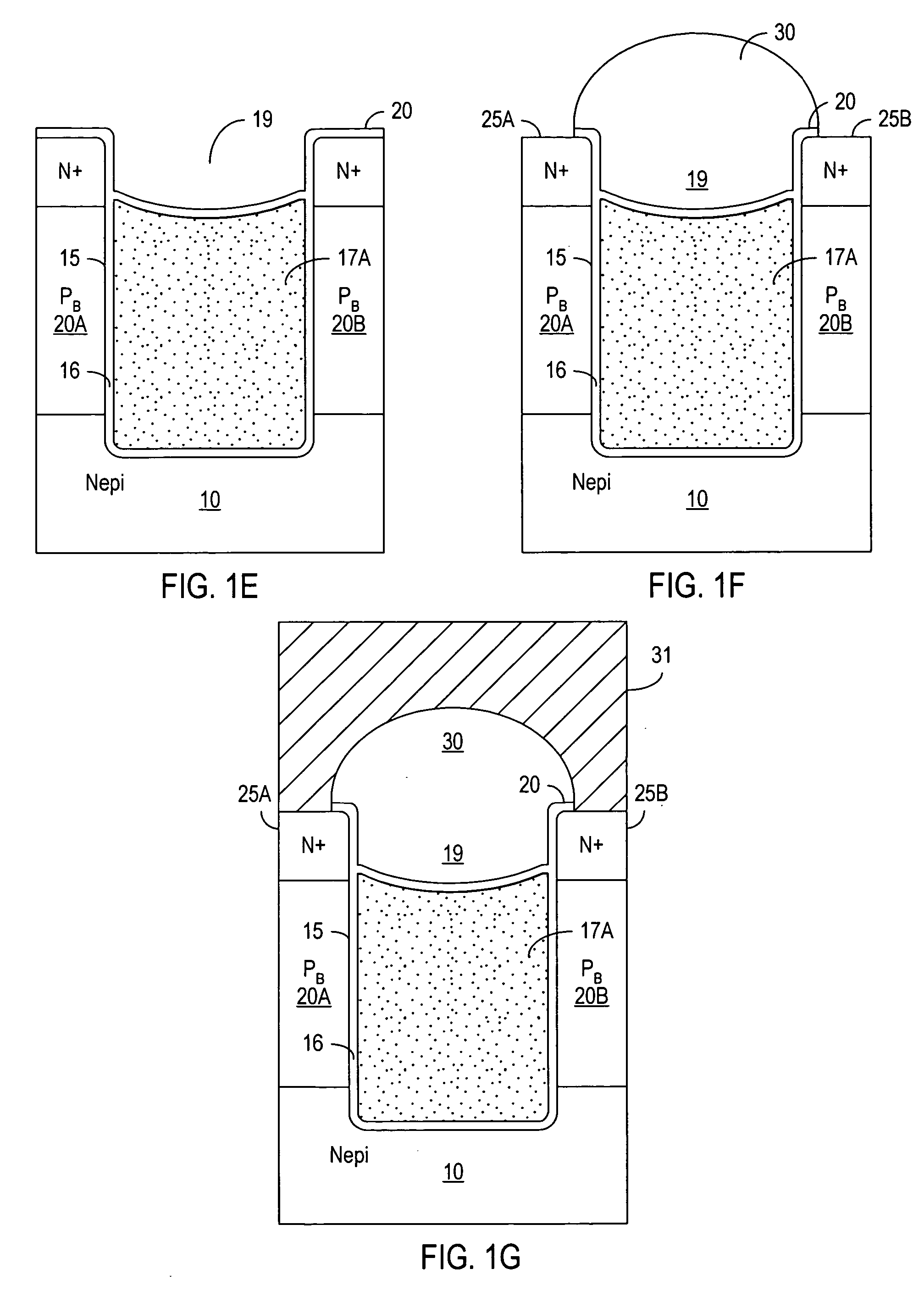Trench power MOSFET with planarized gate bus
a technology of planarized gate bus and mosfet, which is applied in the direction of basic electric elements, electrical apparatus, and semiconductor devices, can solve the problems of only metalizing the gate bus region, destroying the entire device, and undesirable trade-off between fast switching speed, etc., to facilitate the formation of gate contact and maximize device density.
- Summary
- Abstract
- Description
- Claims
- Application Information
AI Technical Summary
Benefits of technology
Problems solved by technology
Method used
Image
Examples
Embodiment Construction
[0065] As shown in FIG. 9A, a trench-gated vertical power MOSFET (also known as a trench DMOS device) associated with this invention comprises an array of tightly packed devices in an array of stripes or polygonal cells (the portion located beneath metal 407A in the drawing) having a series of trenches 403A, 403B, 403C etched into the silicon surface, lined with a thin gate oxide 399A, 399B, 399C in all (or along some portion) of the trenches, and filled with a conductor such as heavily-doped polysilicon 404A, 404B, 404C. The embedded polysilicon is not contacted within this "active cell array", but instead is contacted by extending the trench with its embedded polysilicon into another region to contact the trench polysilicon with metal. Between trenches lies a mesa region typically used to integrate the MOSFET's source, body (channel), and body contact features. Within the active array, the mesa region includes contact windows 408A, 408B, 408C, and 408D to facilitate electrical con...
PUM
 Login to View More
Login to View More Abstract
Description
Claims
Application Information
 Login to View More
Login to View More - R&D
- Intellectual Property
- Life Sciences
- Materials
- Tech Scout
- Unparalleled Data Quality
- Higher Quality Content
- 60% Fewer Hallucinations
Browse by: Latest US Patents, China's latest patents, Technical Efficacy Thesaurus, Application Domain, Technology Topic, Popular Technical Reports.
© 2025 PatSnap. All rights reserved.Legal|Privacy policy|Modern Slavery Act Transparency Statement|Sitemap|About US| Contact US: help@patsnap.com



